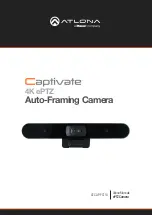
the screen. With outdoor scenes point the meter cell slightly downwards to
exclude excessively bright sky areas.
For more accurate readings, especially of figures against a very light or very
dark background, go close to the subject so that the meter takes in just the
subject itself. For this purpose it is often more convenient to detach the
meter from the camera.
With very contrasty subjects with unpredictable proportions of very bright
and very dark areas, take separate close-up readings of the light and dark
parts. The correct exposure is then the mean of the two.
For incident light readings - especially with colour film - move the white
plastic blind on the meter knob so that it covers the meter cell. Then point
the meter from the subject toward the camera position to be used for the
exposure. For this reading it is again often more convenient to remove the
exposure meter unit from the camera, rather than carry the latter around
for such incident light readings.
Shutter Speed and Movement
The actual shutter speed you need within a series of available aperture-speed combinations is governed by considerations of camera
steadiness as well as of subject movement.
An unsteady camera hold results in camera shake, which will lead to inferior definition of the negative. Practical experience goes to
show that 1/125 sec. is safe, while you have to hold the camera particularly steady when using 1/60 or 1/30 sec. Where lighting
conditions make even longer exposure times essential and there is no subject movement, either support the camera on a tripod, or
look round for extra support for your elbows and hands - e.g. a wall, railing, etc.
The shutter speed required to arrest movement depends of course primarily on the speed with which the subject moves. Remember,
however, that parts of the subject (e.g. the legs of a runner) may move faster than the subject as a whole; you may sometimes have
to compromise and show such parts slightly unsharp. Often that is not a serious fault, as a slight blurring - provided the main part of
the subject is sharp - helps to emphasise the impression of movement. Other factors to consider are the distance of the subject - the
farther away, the less noticeable the movement blur; the focal length of the lens - a long-focus lens in effect brings the subject
nearer; and the direction of the movement. Objects moving across your field of view blur more than if they are approaching or
receding.
The most convenient way of allowing for all these factors is with the aid of a simple table (page 69).
www.mr-alvandi.com
Содержание 1000 F
Страница 18: ...WILD LIFE www mr alvandi com ...
Страница 52: ...THE CUT FILM ADAPTOR www mr alvandi com ...
Страница 54: ...Daylight Exposure Values www mr alvandi com ...
Страница 55: ...Filters for Black and White Film www mr alvandi com ...
Страница 57: ...Colour Temperatures and Light Sources Light Balancing Filter Data Filter Equivalents www mr alvandi com ...
Страница 59: ...Close Ranges with 50 60 mm Distagon and Planar 80 mm www mr alvandi com ...
Страница 60: ...Close Ranges with 120mm S PLANAR 150 200 mm SONNAR www mr alvandi com ...
Страница 61: ...Focusing Ranges with the Extension Bellows Shutter Speeds to Arrest Movement www mr alvandi com ...
Страница 62: ...Conversion of Film Speed Systems Colour Films www mr alvandi com ...
Страница 63: ...Black and White Films www mr alvandi com ...
Страница 64: ...www mr alvandi com ...
















































